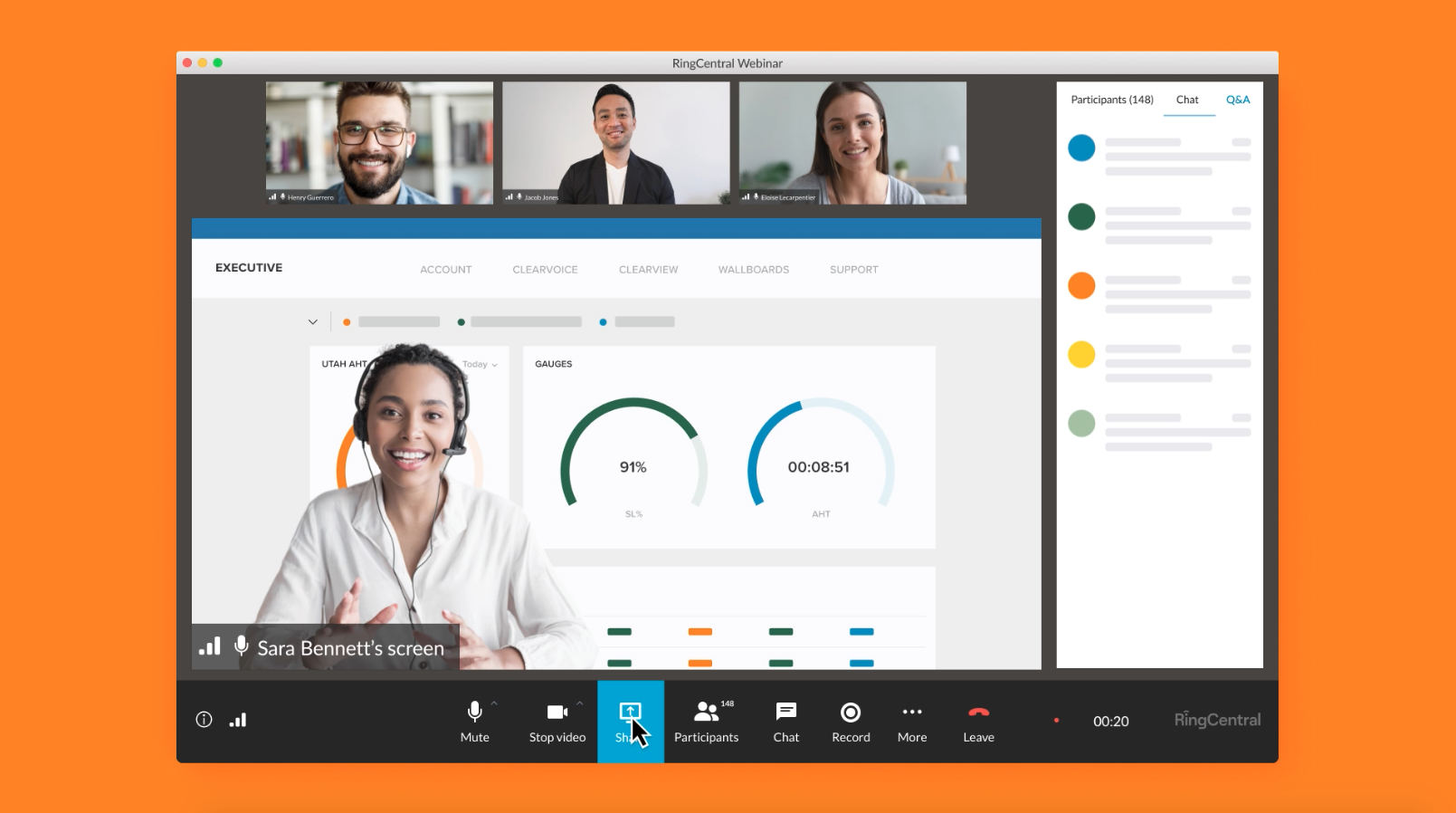When President Ronald Reagan summed up his strategy for negotiating nuclear disarmament with the Soviet Union by quoting an old Russian adage, “Trust but verify,” it set the tone for political and business relations during the 1980s and beyond.
That phrase has new relevance today in the relations between management and employees, as a significant percentage of workers are forced to work from home due to the COVID-19 pandemic. In attempting to make sense of this new business environment, however, many managers are mistakenly under-valuing the “trust” side of that equation and misinterpreting the “verify” side.
Trust is more than a touch-feely buzzword. And managers should be looking to verify remote employees’ commitment to their work rather than merely calculating how long they sit in their seats. The right technology—tools that support simple but effective communication, collaboration, and socialization—can help managers make both sides of the trust/verify equation work together effectively and productively.
Start planning now for the new remote workforce
Working remotely is not new. In the U. S., employees working from home at least half the time increased by 115% between 2005 to 2017, from 1.8 million to 3.9 million, according to an analysis of data from the U.S. Bureau of Labor Statics and the U.S. Census Bureau.
And while our current pandemic-induced exodus is a limited-time aberration, the number of work-at-homers is likely to expand significantly as many employees displaced from headquarters to home offices are finding the change to their liking—as are their employers.
More than three-quarters of at-home workers recently surveyed would like to maintain that arrangement for at least two days a week, and more than a third would like to stay working at home permanently.
At the same time, close to three quarters of chief financial officers say they’re planning to shift some portion of their on-site employees to remote offices permanently, according to a survey of more than 300 CFOs by Gartner.
Companies question the effectiveness of remote work
Yet, it seems some companies have started to question the long-term effectiveness of remote-work arrangements. Gains in productivity due to employees’ initial enthusiasm for working at home are falling off, some employers complain, while the benefits of in-person communication and collaboration can’t be duplicated among employees working remotely.
It’s worth remembering the enthusiasm several years ago with which executives extolled opportunities for communication and collaboration created by the “open office” architecture. It wasn’t lost on workers that at least some of the impetus for the open architecture might be to make it easier for managers to track their work habits. Now some employees have begun to object to the intrusive and clamorous environment that open offices create.
Meantime, many newly remote employees are embracing the autonomy and flexibility afforded by working from home. And they seem motivated to make the arrangement a success. For instance, remote workers tend to work longer hours, not fewer, according to a Microsoft survey of its newly remote workforce.
And while working at home affords cost savings often touted as a major benefit to remote employees, it’s actually more expensive than commuting when everything is tallied up—overhead more than a few home workers seem willing to absorb.
Trust is key to the remote work environment
“Good leaders generate an environment of trust” is a business school truism—one that’s too often dismissed or ignored, unfortunately, rather than embraced.
Now, due to COVID-19, managers are forced to rely on their out-of-sight remote workers to meet deadlines, generate leads, or service customers on their own. And many organizations have reacted to that trust imperative by focusing shortsightedly on the stick instead of the carrot.
Interest in employee monitoring software, such as screen viewers, message monitors, attention trackers, and keystroke recorders, shot up in April, at the start of the pandemic, according to an online trend tracker, and has remained high since.
Instead of buttressing an environment of trust, however, such work-verification technology too often has the opposite effect. Employees tend view these tools with suspicion, as a sign of mistrust or an invasion of privacy.
Monitoring technology, which industry executives refer to as productivity enhancing tools, will have a place in the expanding remote-work environment, perhaps in tracking employees’ time and expenses. Viable trust and genuine commitment, however, are more easily created and supported using less contentious, more comfortable means of interaction.
The right technology is needed for effective trusting and verifying
Managers often forget that casual conversations with colleagues pay dividends in terms of loyalty and trust far beyond the few minutes they involve. And the best way to understand an employee’s level of commitment to a project is simply to ask. The telephone can serve both purposes with remote workers.
For a perceptive leader, a phone conversation can reveal a great deal about an individual’s involvement and enthusiasm with his or her work. Hard numbers like keystroke counts or attention times, on the other hand, paint a limited, easily misunderstood picture.
Messaging is almost as personal a way of communicating as the telephone, especially for the newest generation of workers. More casual and less intrusive than a phone call, messaging is a direct way to exchange information that’s always at hand—which may account, at least in part, for the extra hours remote workers say they expend.
Both phone calls and messaging can be used for real-time, team-oriented collaboration among remote workers, as well as between them and on-site colleagues. Not only does real-time online collaboration help build comraderie and trust, the ease of interaction in a virtual meeting can aid data transfer and improve productivity. For example, Microsoft’s remote workers shortened their online virtual meetings considerably compared with how long they spent in meetings on-site—a goal of any right-minded manager.
In the same way, online video technology provides remote workers a vehicle for real-time collaboration and team building that’s direct and interactive. It adds the social cues and emotional reinforcement colleagues express visually, something at-home workers might be missing working in isolation.
Collaboration tools should be simple, intuitive, and cloud-oriented
It’s important that managers make these virtual meeting tools available to remote workers, over and above their corporate functions, for interacting and socializing on a personal level. Being able to schedule a “Meet My Pet” online video meeting for team members to introduce their furry companions, or a messaging session to discuss volunteering for a worthy cause, will aid in making workers at home comfortable and productive with the technology, as well as trusting and supportive of management’s intentions for it.
All this means that these communication/collaboration systems must be simple, easy to comprehend, and intuitve to use. A unified communications toolset, which incorporates team messaging, video conferencing, and telephone service in a single integrated platform, may provide the necessary functionality in a reasonably simple and inviting package. A unified messaging toolset offered as a cloud service likely will be more flexible and cost-effective than one that works on premises.
Making effective use of these more personal, more direct, more inclusive technology platforms, rather than simply imposing intrusive and intimidating measuring sticks, will go a long way toward creating an environment of trust among remote workers. And for discerning and perceptive managers, they will serve as effective ways to verify their displaced employees’ commitment to the projects their involved with and the organizations they’re employed by.
Reagan was right: Trust, but verify—the right way.
Originally published Aug 05, 2020, updated Jan 18, 2023




